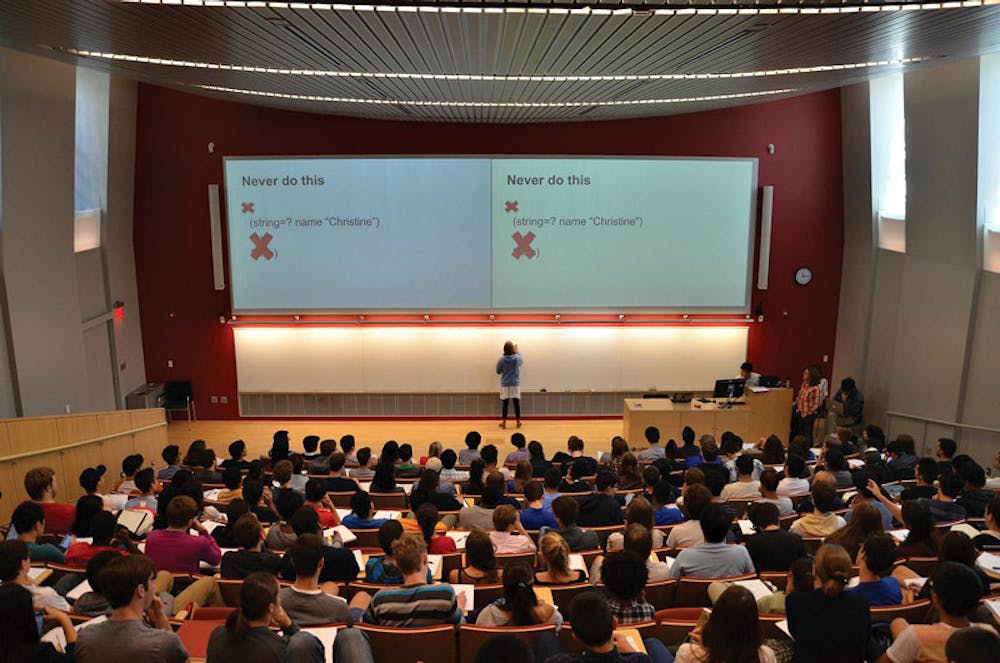Responding to increasing enrollment rates in computer science courses, the Department of Computer Science is planning a fundraising campaign to alleviate strain on departmental resources, said Andy van Dam, professor of computer science.
Van Dam, who teaches CSCI 0150: “Introduction to Object-Oriented Programming and Computer Science,” will help lead the effort, which is still in its ideation stage but could begin as early as next semester if the case statement for the campaign receives approval this semester.
“We are certainly not unique in being resource-constrained, but the numbers are still pretty overwhelming. The need has been recognized, and people seem sympathetic to doing something. Now the question is what, when, how, who,” van Dam said.
More than 15 percent of undergraduates are taking a computer science class this semester, said Tom Doeppner, director of undergraduate studies for the computer science concentration. The total number of graduating seniors in computer science and joint computer science concentrations rose from 48 students in 2008 to 114 this past May, reflecting a national trend of the field’s growing popularity, he added.
“STEM is becoming more popular, and students are getting more exposure. There are a lot of jobs in computer science, and it has always been the case that people with a computer science degree from Brown tend to do well in the job market,” Doeppner said.
Introductory course enrollment numbers reflect this trend: Currently, 322 students are enrolled in CS 15, 214 students are enrolled in CSCI 0170: “Computer Science: An Integrated Introduction” and 161 students enrolled in CSCI 0020: “The Digital World.” The size of CS 15 has prompted the course to move out of MacMillan 117 to Salomon 101, the largest lecture hall on campus.
To provide the individual attention necessary for students to succeed, these introductory courses rely heavily on teaching assistants to offer TA hours, grade homework and post notes and homework online.
“Students need lots of individual help since they’re practicing skills that they’ve never done before,” said CS 15 Head TA Gregory Chatzinoff ’15. “We try to give each student around 15 minutes each (during TA hours) and help them as best as we can in that time period.”
Doeppner said the standard student-TA ratio in computer science courses at Brown is 8-to-1. This allows the teaching assistants to support students beyond TA hours, which students and TAs said sometimes have lines that last for hours.
“The TAs have a strong presence online and through email, which has been incredibly helpful,” said Laura Shea ’18, a student in CS 17.
Anonymous donors contributed $1 million to the computer science department to support its undergraduate TA program, President Christina Paxson wrote in a campus-wide email recapping the May 2014 Corporation meeting. The donation will allow the department’s TA budget to increase for the first time since 2006.
In addition to long wait times for help from TAs, large class sizes also present problems in terms of space for labs and for TA hours. CS 17 Head TA Indy Prentice ’15 said up to five courses hold TA hours in the same room simultaneously, making it harder for students to concentrate. Students who come to the SunLab to do work sometimes have difficulty finding an available computer because labs occur in the space every day of the week, said Prentice, who also oversees the entire computer science TA program as one of two Meta TAs.
The Center for Information Technology holds space for computer science classes, labs, Computing and Information Services and more. “Our goal is to take over the CIT building. We need to effectively own all the space,” Doeppner said.
“We’re excited that computer science has become so popular and that there are so many people interested in it,” said Associate Professor of Computer Science Amy Greenwald, who teaches CS 17. “We want the University to recognize the importance of computer science and to give us more resources so that we can grow even beyond” where the department is now, she said.
A previous version of this article misstated the number of computer science Meta TAs this year. There are two, not three. The Herald regrets the error.

ADVERTISEMENT




